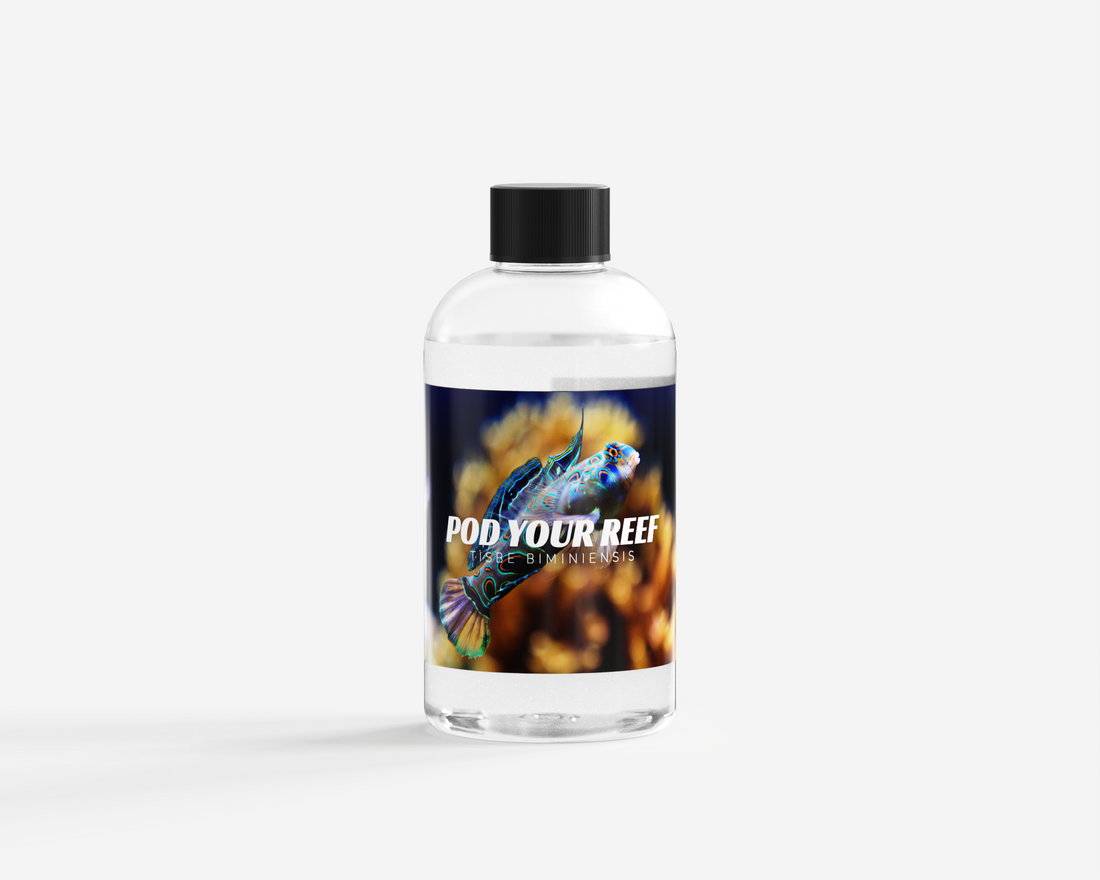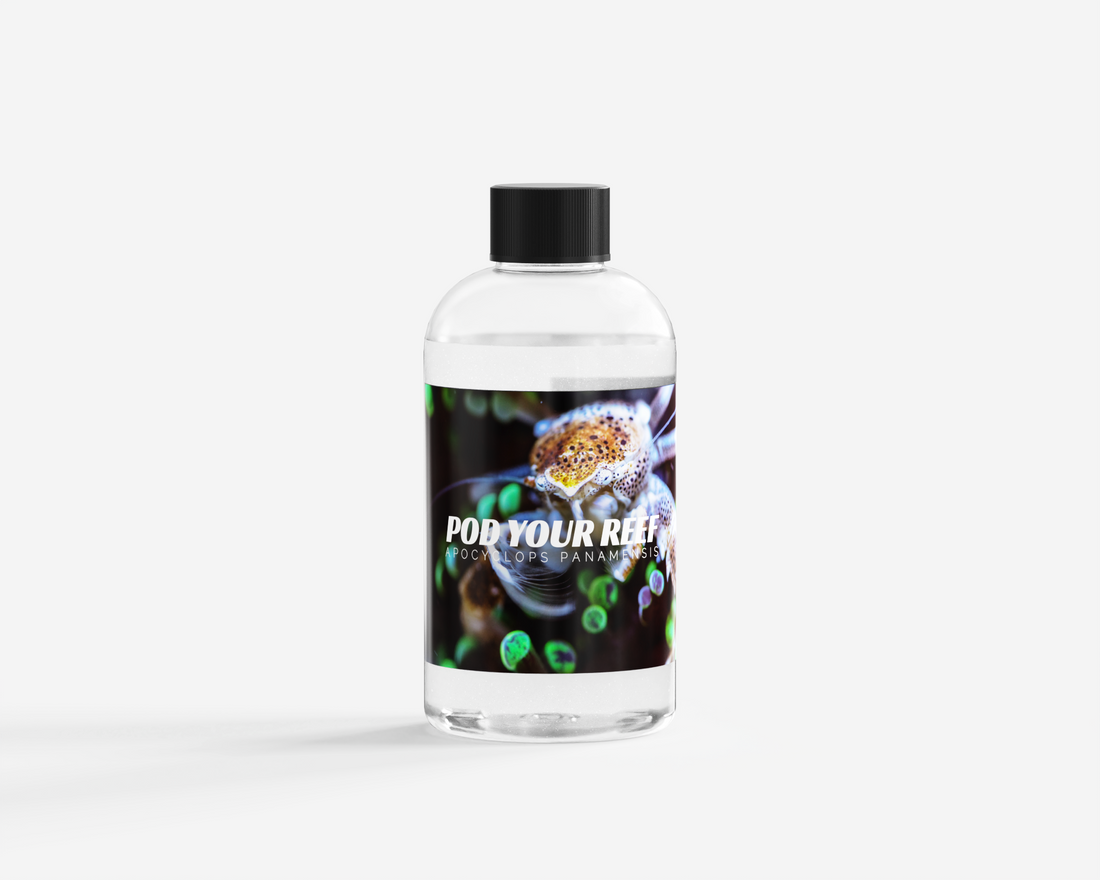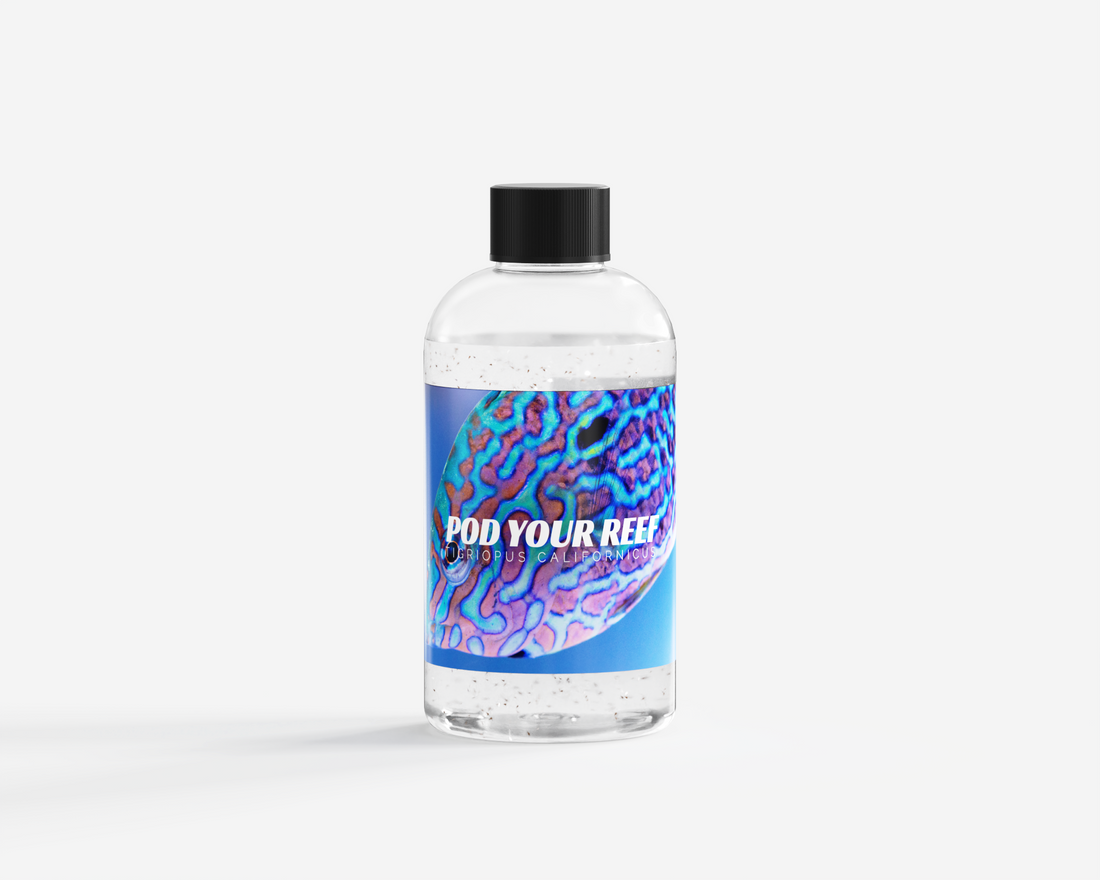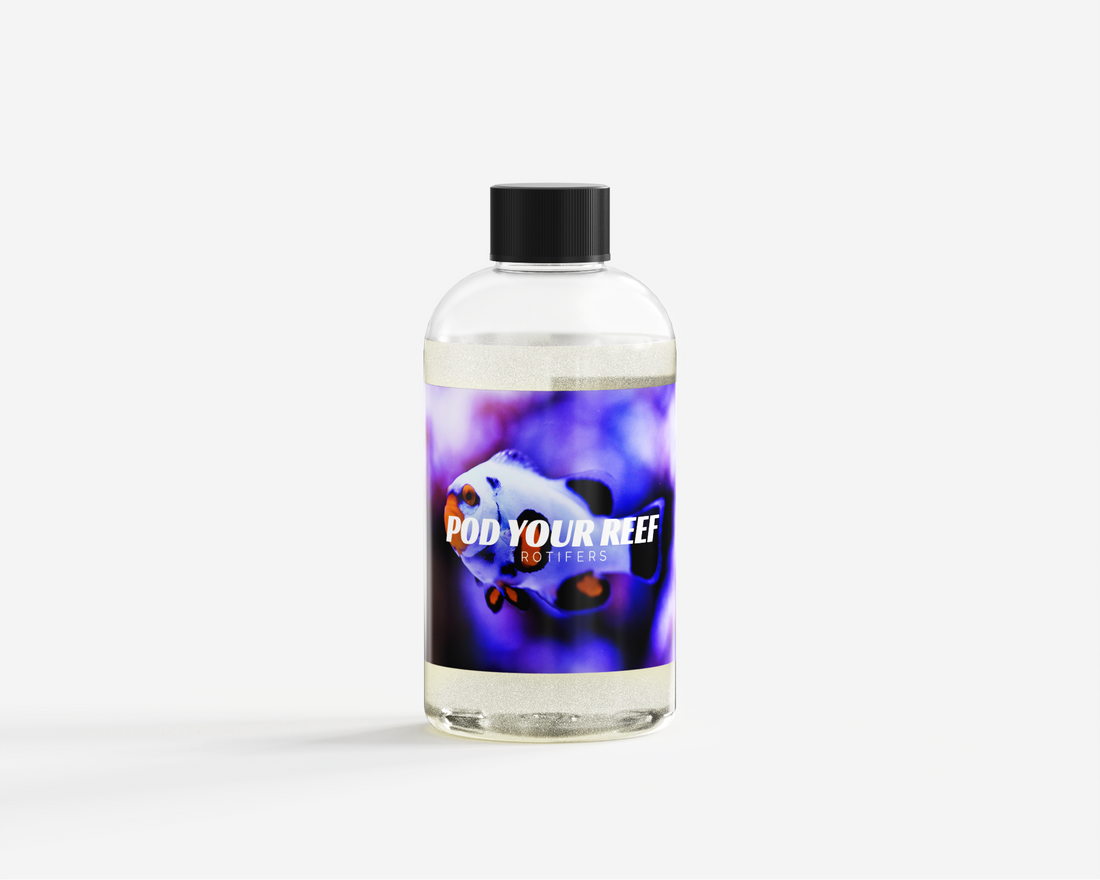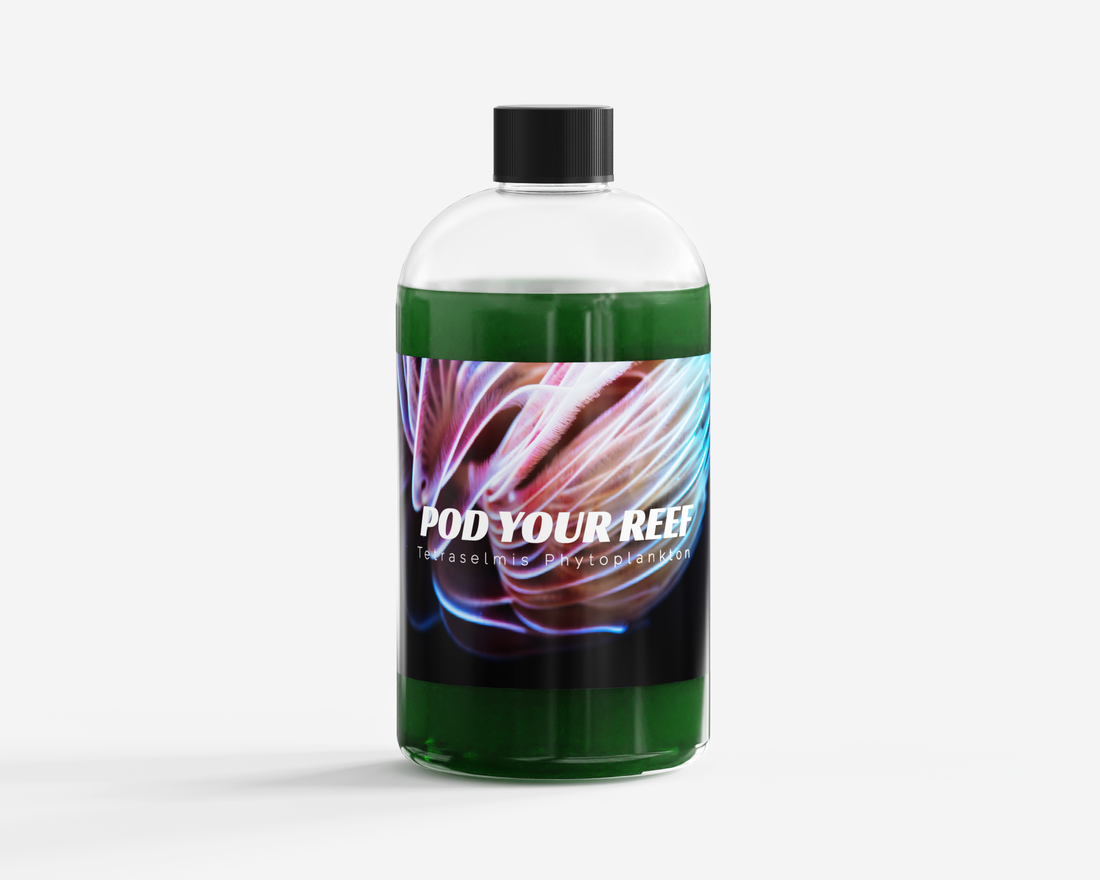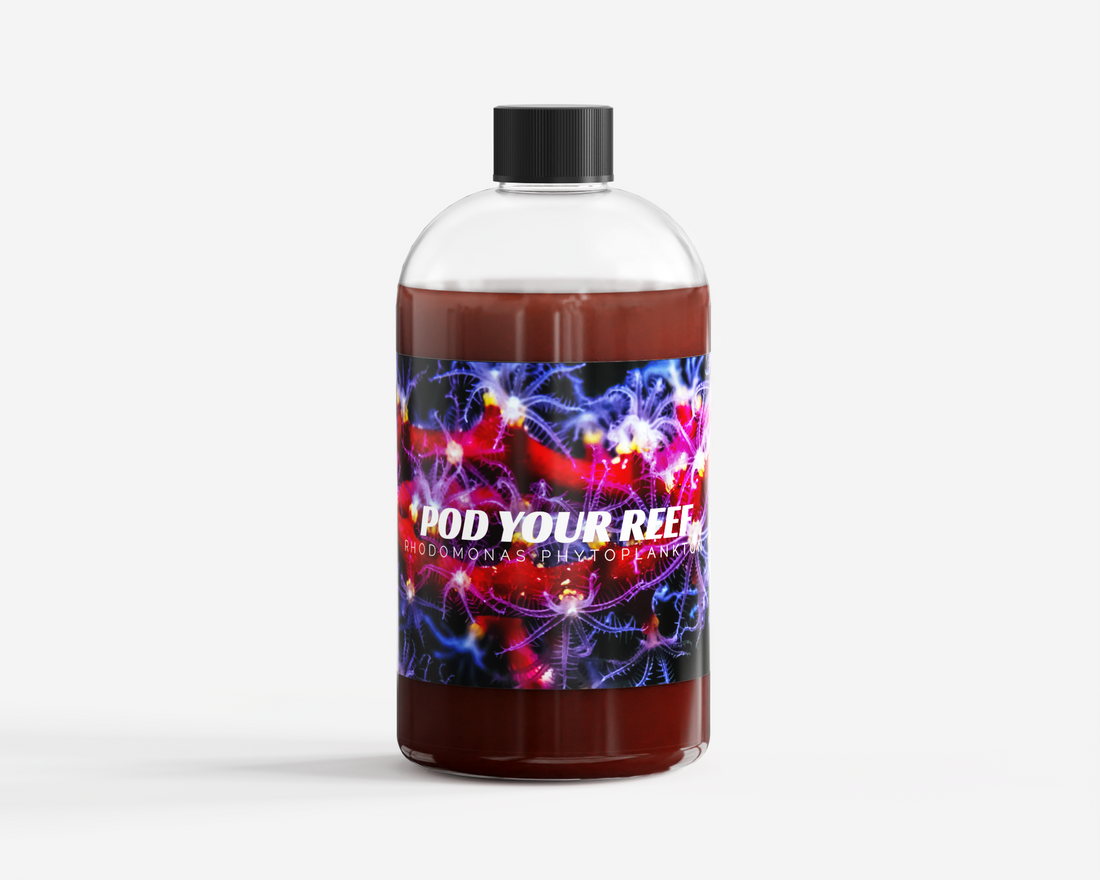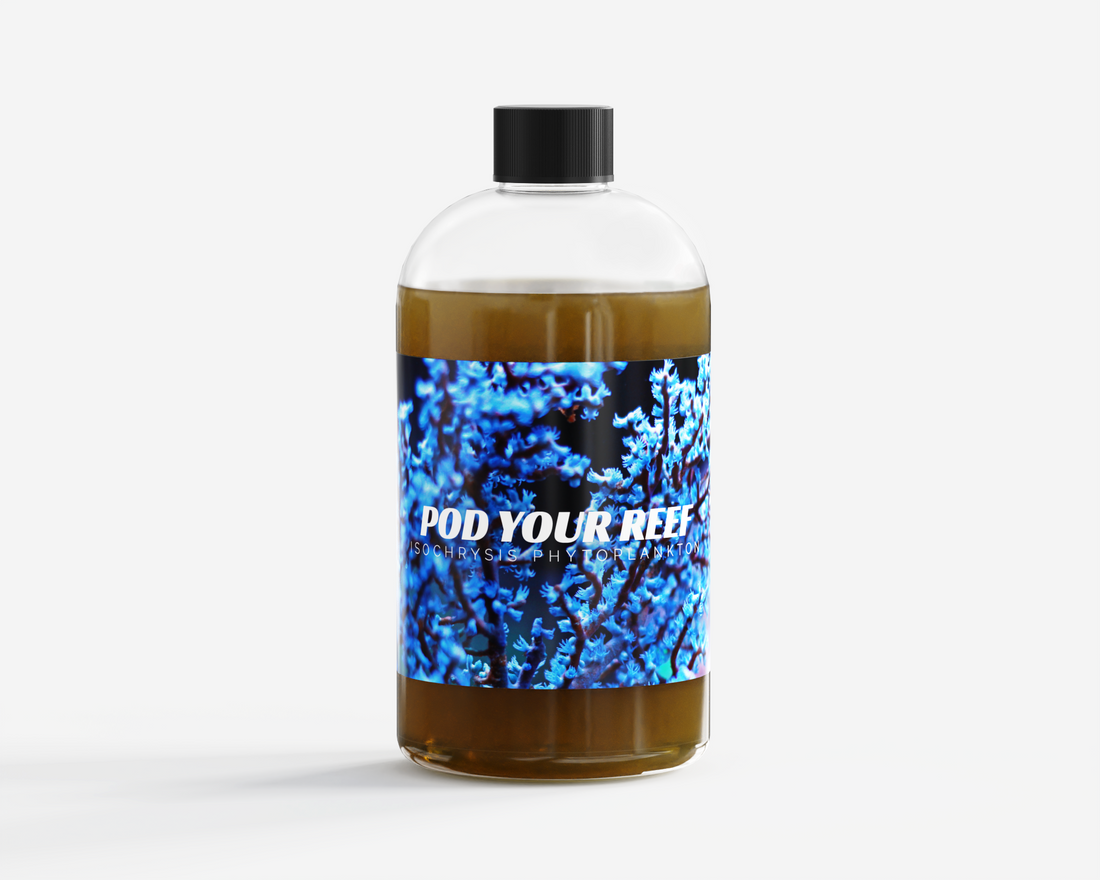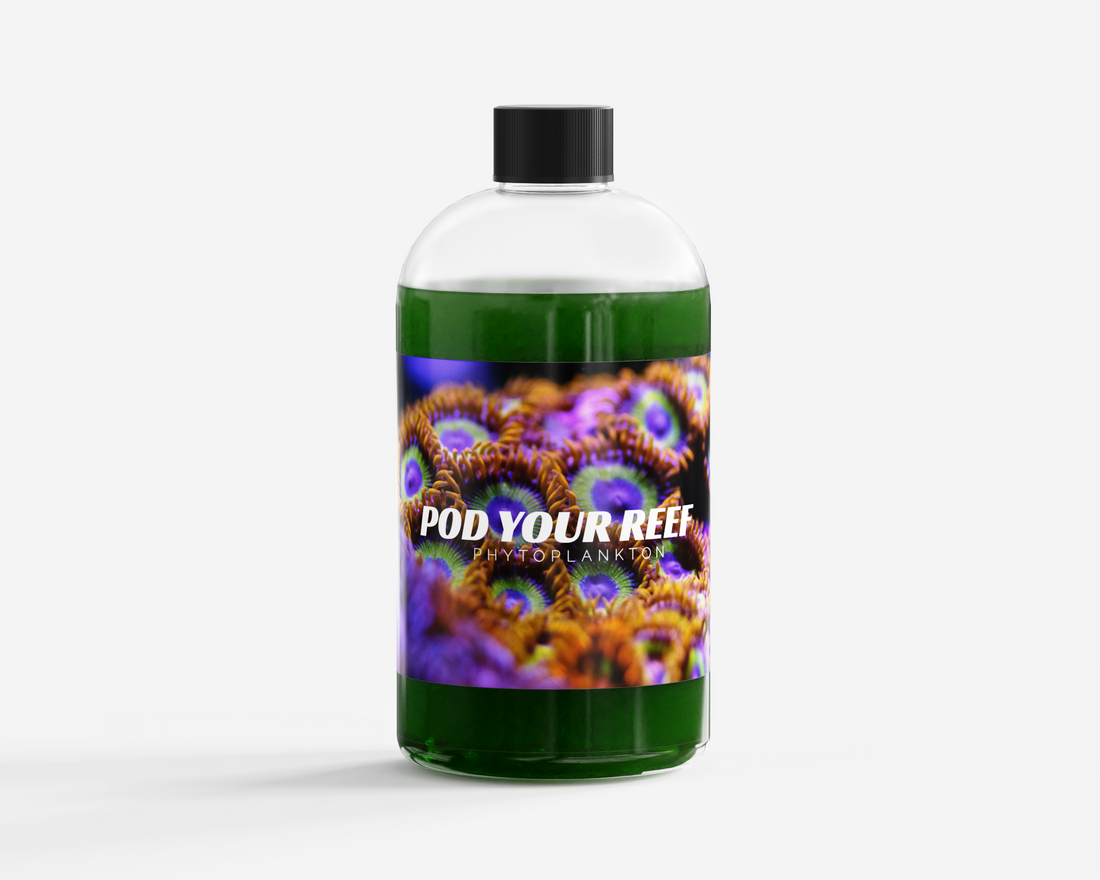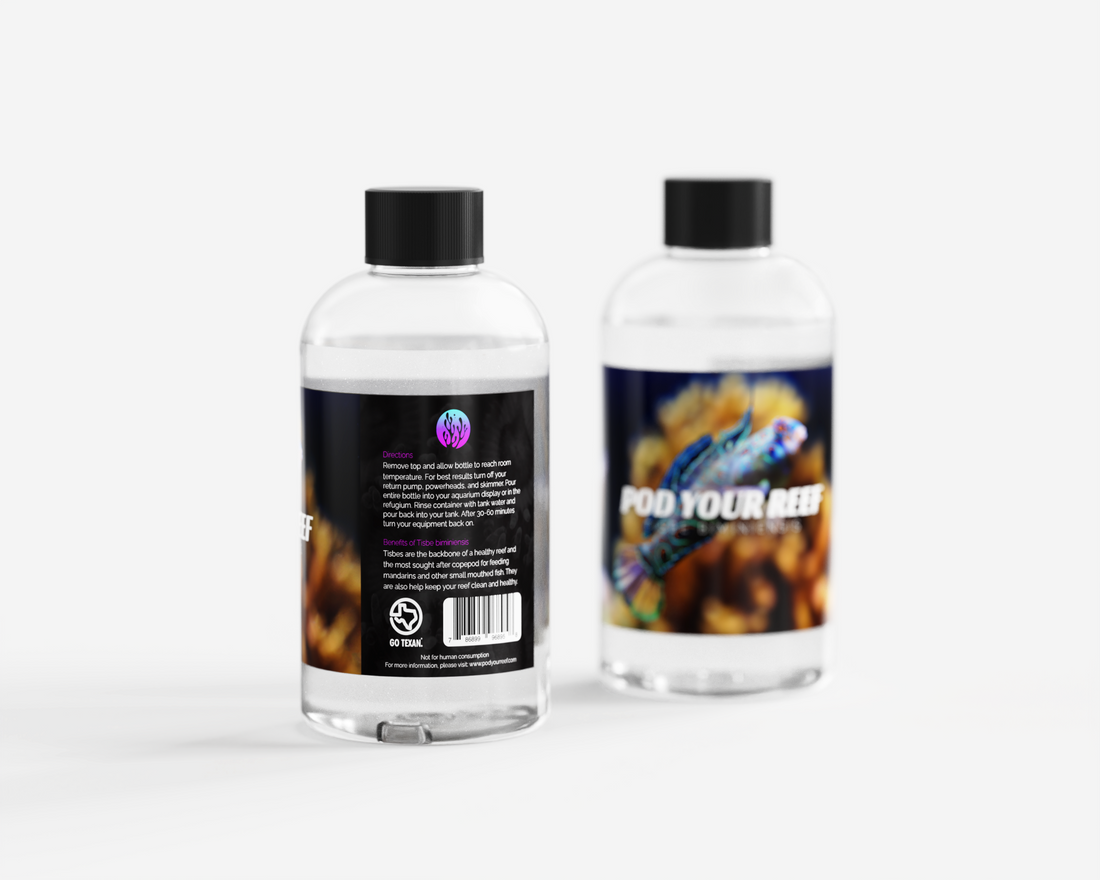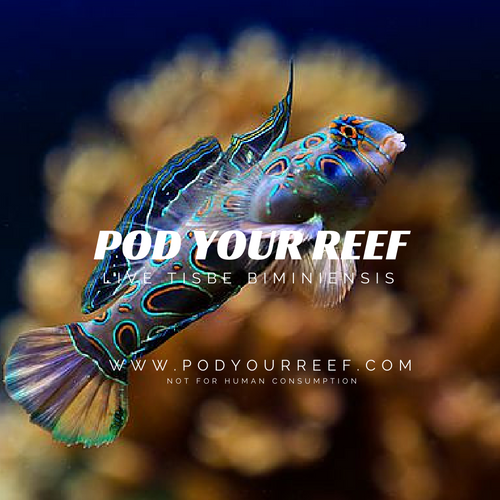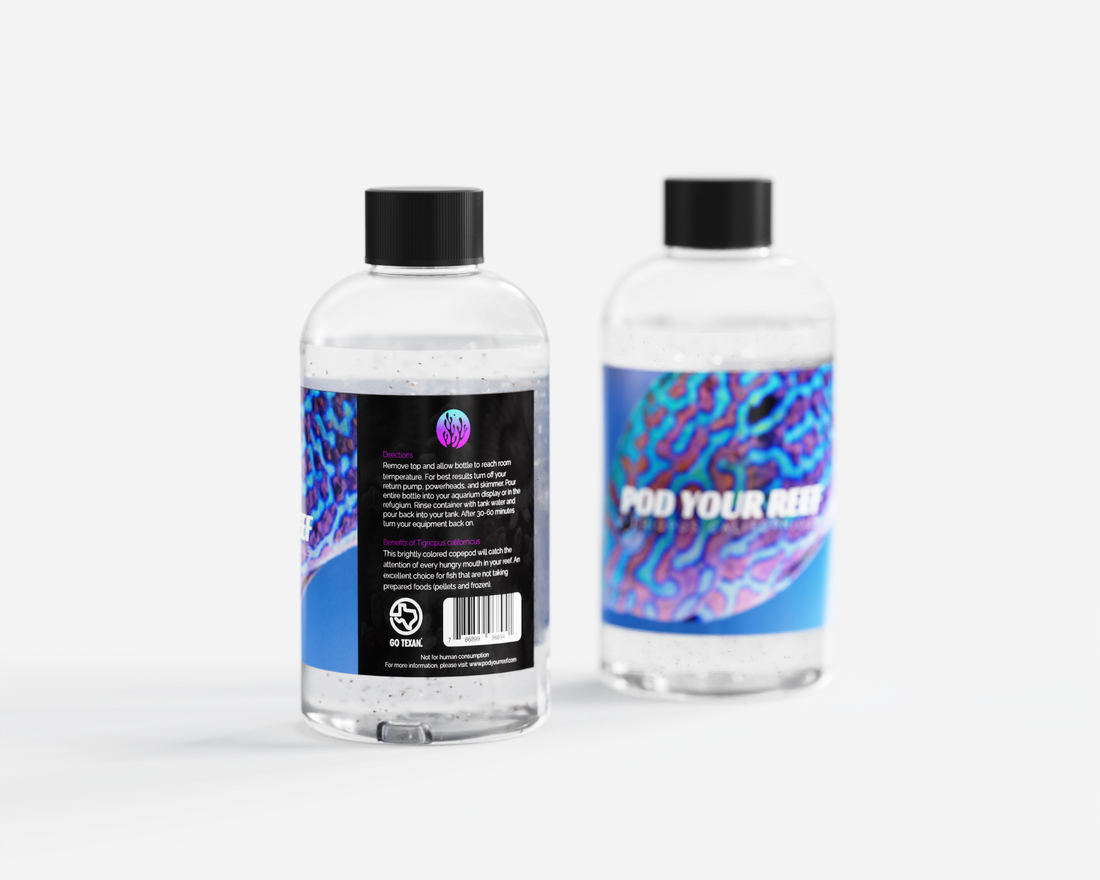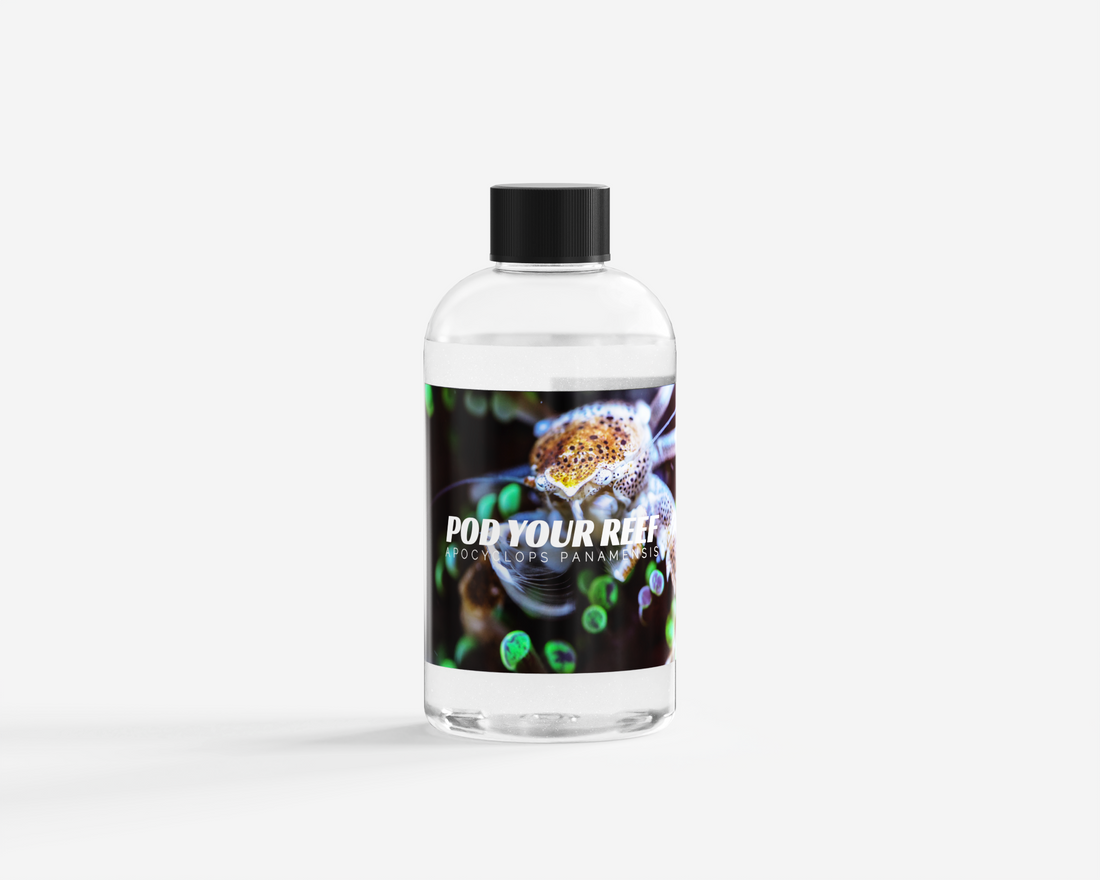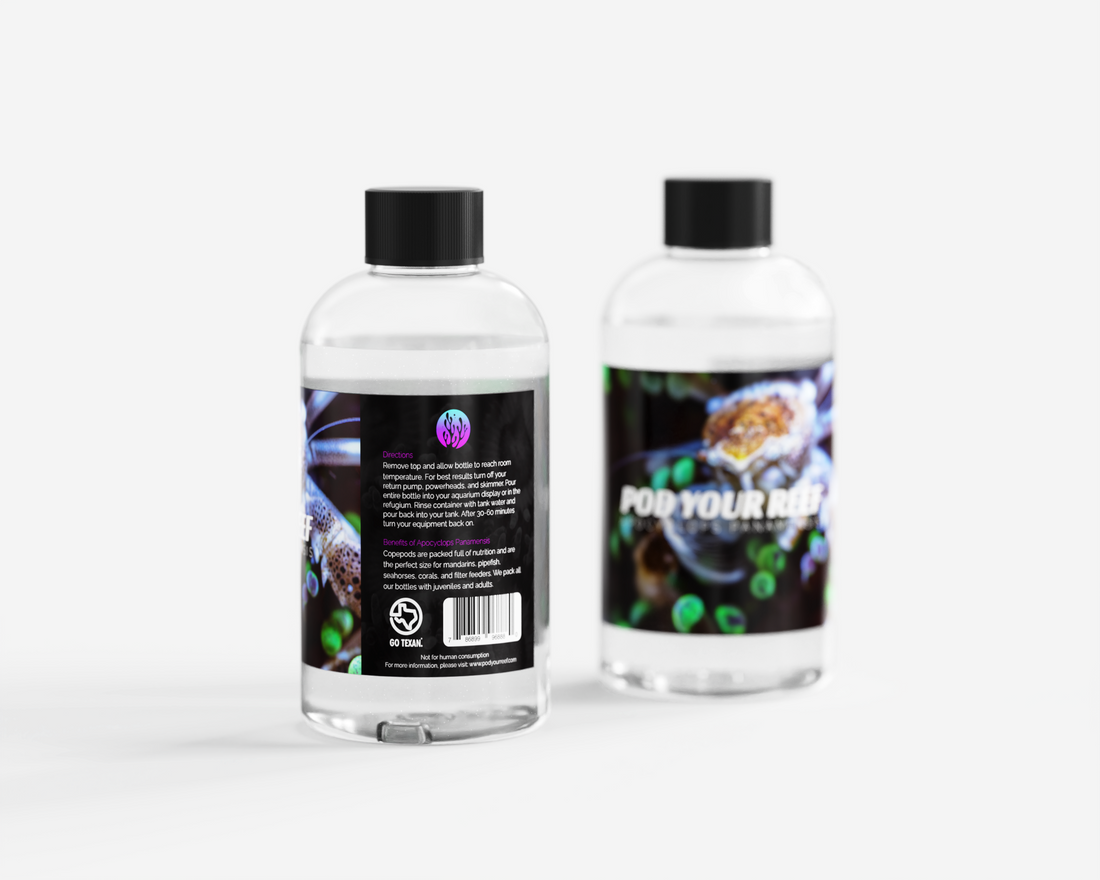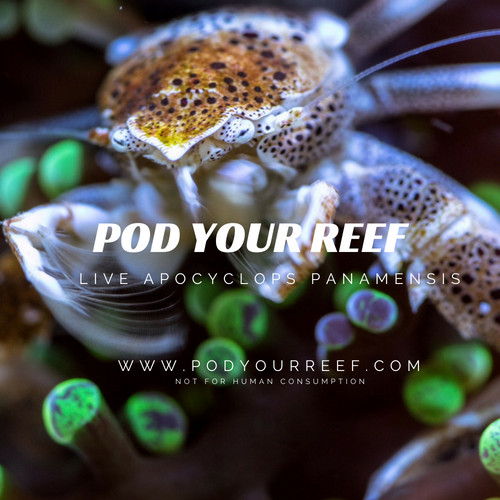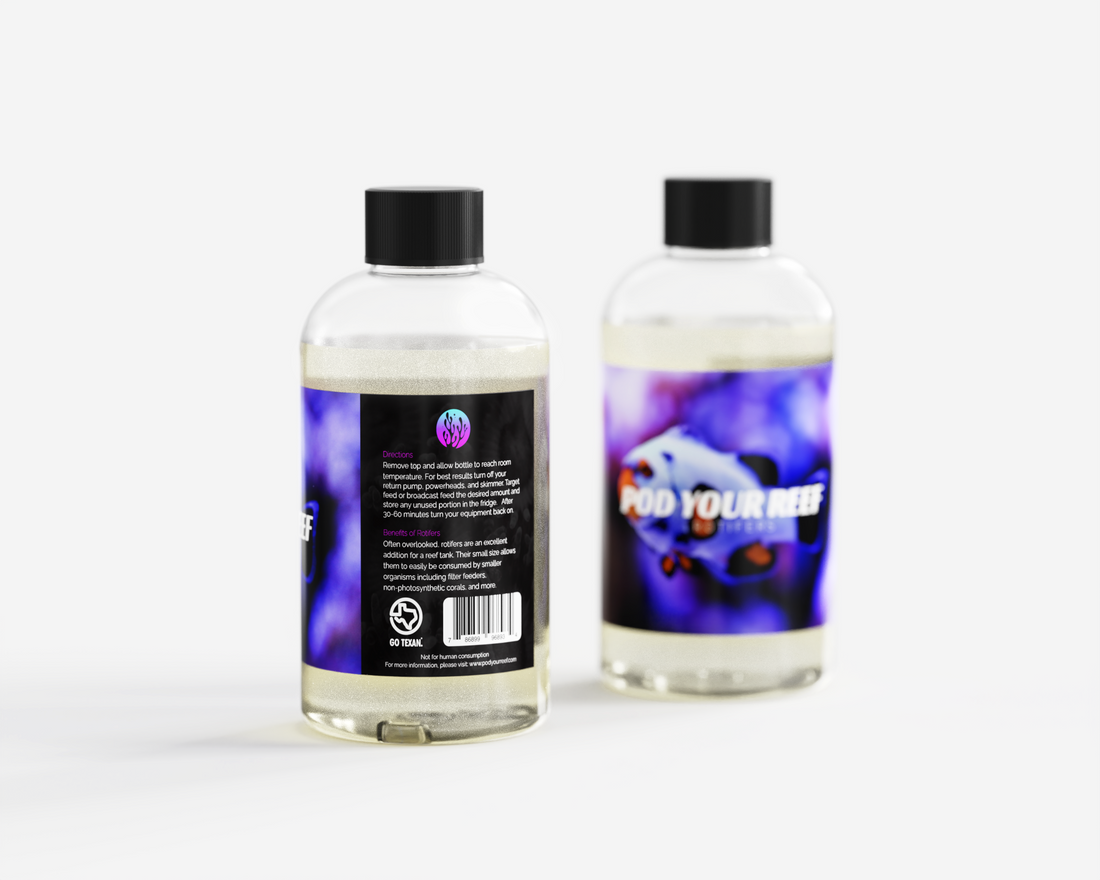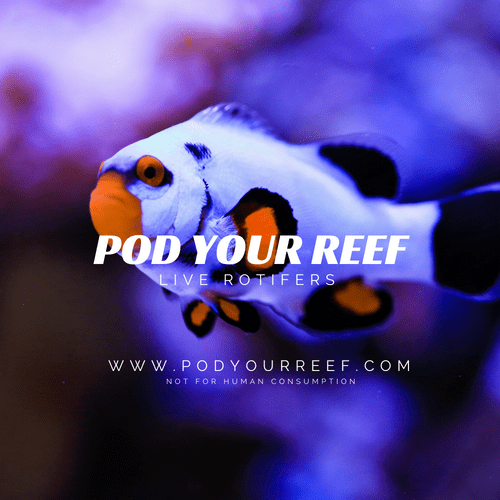
Care
Aiptasia Anemones: The Invasive Pest of Reef Aquariums
Aiptasia Anemones: The Invasive Pest of Reef Aquariums
What Are Aiptasia Anemones and Why Are They a Problem?
Aiptasia anemones are small sea anemones often unwittingly introduced into marine reef aquariums, where they quickly become invasive pests rather than welcome residents. Unlike ornamental anemones that aquarists intentionally keep, Aiptasia are considered nuisance organisms due to their explosive growth and harmful stings. They are sometimes called glass anemones or glass rose anemones, referencing their translucent brownish appearance. Many reef keepers initially mistake a tiny Aiptasia for a new coral polyp or a harmless hitchhiker, only to later discover it multiplying all over the tank.
Why are Aiptasia bad for your reef? For one, they multiply rapidly and spread throughout the aquarium, outcompeting desirable organisms for space and resources. A single Aiptasia can turn into dozens in a matter of weeks. They also possess potent stinging tentacles loaded with nematocysts (stinging cells). These tentacles can sting nearby corals, fish, and invertebrates, causing tissue damage to corals and irritating (or even killing) small fish or shrimp. In essence, an Aiptasia outbreak can overrun a reef tank, carpeting rock surfaces and burning any corals in their vicinity. While they won’t directly “crash” your system or poison your water, their presence is detrimental to a healthy reef aquarium because of how aggressively they take over and harm other organisms.
In addition to their sting, Aiptasia are masters of survival. They can shrink and retract into tiny crevices or holes in rock when threatened, making them hard to eradicate. If you try to pluck or scrub them off, any little fragment left behind can regenerate into a new anemone. Their combination of fast reproduction, resilience, and potent sting earns Aiptasia the title of one of the most notorious pests in the reef aquarium hobby. Advanced hobbyists know that encountering Aiptasia is not a question of if, but when, and that prompt action is needed to prevent a full-blown infestation.
Biology of Aiptasia Anemones
Understanding Aiptasia’s biology helps explain why they thrive in our tanks and how best to combat them. These anemones belong to the phylum Cnidaria (like corals and jellyfish) and share many of the same biological traits as their more desirable relatives.
Appearance and Habitat
At first glance, Aiptasia anemones look like tiny anemones or polyps with a central oral disk and slender tentacles that give a feathery, palm tree–like look. They usually appear semi-translucent brown, tan, or sometimes clear/whitish. The brownish hue comes from symbiotic algae living in their tissues (more on that below). Size-wise, most Aiptasia in aquariums range from a few millimeters up to a couple of inches in diameter, though in nutrient-rich conditions they can grow larger. There are several species (e.g. Exaiptasia pallida, Aiptasia pulchella), but hobbyists generally just refer to them all as “Aiptasia.”
In the wild, Aiptasia are widely distributed in tropical and subtropical waters. They are often found attached to hard substrates like rocks, shells, dead coral, and even mangrove roots in shallow protected waters. They favor environments where they can get enough light (for their algae) and food, but otherwise they are not very picky – they’ll colonize tide pools, marina docks, lagoon shallows, and reef flats. This hardy, opportunistic nature serves them well in home aquariums too.
Habitat preferences in aquariums: Aiptasia will attach to live rock, frag plugs, tank glass, plastic equipment, and other surfaces. They often wedge into crevices and holes, extending their tentacles out when feeding or when lights are on. They can tolerate a wide range of water conditions and lighting. In fact, Aiptasia often thrive in high-nutrient or low-flow areas that might suppress more delicate corals. They benefit from light for photosynthesis but can survive in semi-shaded spots as well. You might first notice one on the underside of a new coral frag or peeking out of a porous rock. Because they retract when disturbed, they can be hard to spot – sometimes only revealing themselves when food is in the water or during the night.
Symbiosis and Energy Sources: Photosynthesis and Feeding
One reason Aiptasia are so successful is their dual feeding strategy. They are mixotrophic, meaning they have multiple sources of nutrition. Within their tissues, Aiptasia harbor symbiotic dinoflagellate algae (zooxanthellae), similar to those in reef-building corals. These algae perform photosynthesis and provide nutrients (like sugars) to the anemone, which helps fuel the anemone’s growth. Under aquarium lights, Aiptasia can meet a good portion of their energy needs from sunlight or aquarium lighting alone. This is why they can survive even in tanks where they are not directly fed – their plant-like endosymbionts are feeding them.
However, Aiptasia are not content to rely solely on photosynthesis. They are also voracious heterotrophs, meaning they will actively capture and consume prey or organic matter from the water. Their waving tentacles can sting and ensnare tiny zooplankton, brine shrimp, copepods, and other small critters that drift by. In a reef tank, they will readily grab mysis shrimp or other foods meant for fish and corals. This heterotrophic feeding supplies important nutrients (especially proteins and nitrogen) that the algae alone may not provide in enough quantity.
In fact, scientific research has shown just how important feeding is for Aiptasia’s growth. In one study, Aiptasia anemones were able to survive an entire year without any external food, sustained only by their photosynthetic symbionts – but they shrank to a fraction (about 15%) of their original biomass in that time. When well-fed, though, Aiptasia grow rapidly and can reach full size quickly. The bottom line is that Aiptasia get the best of both worlds: sunlight gives them baseline energy, and capturing prey allows them to really flourish. This mixotrophic ability makes them incredibly resilient. Even if you try to “starve” them by cutting back on feeding your tank, an Aiptasia can linger on light alone for a long time (albeit shrunken), only to rebound when food is available.
Reproduction and Rapid Proliferation
Aiptasia anemones are prolific reproducers, which is the crux of why they turn from one or two innocuous polyps into a plague. They can reproduce in two ways: sexually (by spawning) and asexually (by cloning themselves).
- Sexual reproduction: Aiptasia are capable of releasing eggs and sperm into the water column (some species are hermaphroditic, others have separate sexes). In a mature aquarium (or in the ocean), if spawning occurs and eggs are fertilized, they develop into free-swimming larvae called planulae. These microscopic larvae float in the water for a time, then settle onto a surface and metamorphose into new polyps. In practice, sexual reproduction is harder to observe in home aquariums, but it can happen, especially if you inadvertently have multiple Aiptasia that spawn. Even a single anemone could potentially self-fertilize if it has both gametes, though successful settlement in a closed tank is less common than cloning. The problem is that sexual reproduction can spread Aiptasia all over – larvae might drift and settle in completely new spots, initiating new colonies in places far from the original.
- Asexual reproduction (clonal growth): The more common way Aiptasia multiply in our tanks is through a process called pedal laceration. As an anemone moves or even just periodically, it can leave behind tiny pieces of its basal disc (the “foot”). Each of those little tissue scraps can regenerate into a whole new anemone. This means Aiptasia effectively clone themselves and expand a colony locally. You might notice a small Aiptasia bud appearing next to a larger one – that’s pedal laceration at work. They can also bud off tiny anemones from their sides in some cases. This mode of reproduction is extremely efficient and hard to prevent. Worse, any attempt to physically remove or kill an Aiptasia that doesn’t completely destroy it may actually trigger pedal laceration – the anemone’s damaged base breaks into multiple bits that regenerate. Hobbyists often lament that trying to scrape or tear off an Aiptasia results in “two more growing back” in its place, and this is exactly why. The act of tearing it releases clones around the area.
With these reproduction strategies, it’s easy to see how one tiny hitchhiker can turn into a full-blown infestation. Aiptasia are essentially weedy. They grow fast, reproduce fast, and can rapidly colonize any available space. In a nutrient-rich, well-lit aquarium, their population growth can be exponential if not kept in check. Advanced reefers know to never ignore even a single Aiptasia, because a few weeks or months later, you could be facing dozens or hundreds.
How Aiptasia Are Introduced into Reef Aquariums
If Aiptasia are so troublesome, why do we end up with them in our tanks in the first place? The answer is that these anemones are stealthy hitchhikers. They often sneak into even the most carefully maintained aquariums via live rock, corals, or other materials transferred from other systems.
- Live Rock: In the era of wild-collected live rock (rock harvested from the ocean and sold “live” with organisms on it), Aiptasia were a very common stowaway. A small Aiptasia might be tucked in a pore of the rock or as a tiny polyp on the underside. When placed in your tank’s favorable conditions, it can emerge and start multiplying. Even today, if you get live rock or live sand from an established tank (from a fellow hobbyist or a store), it might carry Aiptasia.
- Coral Frags and Bases: Perhaps the most common modern route of introduction is on frag plugs, coral bases, or frag rock. Aiptasia can attach to the rubble or plug that a coral is encrusted on. They might be extremely small (a few millimeters or even microscopic if it’s a larval form or tiny bud). New corals are often the source of “mystery” Aiptasia outbreaks. You might not see anything when adding the coral, but weeks later a tiny anemone appears nearby – it was there all along, just too small to notice.
- Macroalgae and Live Plants: If you add macroalgae (for refugiums) or decorative plants from another system, they could have a tiny Aiptasia attached or a bit of one tangled in the algae.
- Equipment and Water Transfers: Though less common, if you move anything wet from one tank to another (a filter sponge, a piece of equipment that had been in an infested tank), you could transfer Aiptasia. Their larvae are free-swimming for a time, so theoretically water from an infested tank could contain planula larvae. This is why even water from a bag that held a coral or fish could be suspect – it’s generally good practice not to pour that water into your display, in case it harbors unwanted pests like Aiptasia or parasites.
In summary, Aiptasia are usually unintentional introductions. No one goes out and buys Aiptasia on purpose (except perhaps to culture them for Berghia nudibranch food, which is a niche case). They hitchhike and slip past our inspections. They are small, can retract into tiny holes, and can start from a single spec of tissue. Even diligent coral dipping may not kill Aiptasia anemones or larvae (common coral dip solutions are more aimed at parasites like worms or bugs; anemones often tolerate those dips). This is why quarantine of new rock and corals is wise – keeping new additions in an observation tank for a while can allow any Aiptasia to reveal themselves so you can eliminate them before they reach your main display.
Key point: Once Aiptasia are in your display tank, they are much harder to eradicate. Prevention and early detection are critical. Inspect the bases of new corals carefully (use a magnifying glass – seriously, they can be that small!), remove or re-glue corals off of suspect frag plugs, and when in doubt, quarantine. Despite best efforts, nearly every long-term reefer will confront Aiptasia at some point because of how sneaky these pests are.
Development and Resilience: Scientific Insights into Aiptasia
Aquarists have long known that Aiptasia are hardy and fast-spreading, but recent scientific research has shed even more light on how these anemones develop and why they’re so resilient. Aiptasia has actually become a model organism for studying coral-algae symbiosis and anemone biology, because they are easier to breed in the lab than corals. One particularly interesting study (PNAS 2023 by Maegele et al.) followed the complete life cycle of Aiptasia in the laboratory, revealing some surprises about their larvae and juvenile stages.
Feeding fuels Aiptasia’s life cycle: Researchers discovered that Aiptasia larvae (the tiny planula stage) are not passive drifters relying on algae – instead, the larvae are active predators. Even at just 2 days old, Aiptasia planulae have functional stinging cells and will hunt and consume live prey! In the study, larvae readily captured and ate copepod nauplii (baby copepods), which provided the nutrition needed for them to grow and metamorphose into polypsfile-wrppztn7o3dcaugufzybatfile-wrppztn7o3dcaugufzybat. This carnivorous behavior of larvae was crucial – when provided ample live prey (like Tisbe copepod nauplii), the larvae grew in size, underwent metamorphosis, and settled as juvenile anemones in about 14 days post-fertilization. This was the first time Aiptasia’s full life cycle (from egg to settled polyp) was observed, since previously larvae wouldn’t settle without the right cues.
Symbiosis independence: A surprising finding was that the presence or absence of the algal symbionts (zooxanthellae) in the larvae did not affect their growth or settlement success. In other words, baby Aiptasia didn’t need to have their algae on board to develop – as long as they could eat prey, they did just fine. The algae were not providing significant signals or nutrients during the larval stage. Instead, it was the diet (carnivory) that mattered most for getting the larvae to settle. The study concluded that “the importance of diet outweighs the role of symbiosis during primary polyp growth and development” in Aiptasia. This is quite interesting, because many reef-building coral larvae depend on symbiotic algae uptake for survival and growth after settlement. Aiptasia, in contrast, can go it alone early on – a testament to their hardiness.
However, the researchers also found that while symbiotic algae weren’t needed for larvae to grow and settle, they are important later on for the anemone’s life cycle. Aiptasia that lacked symbionts could grow into polyps and even reproduce asexually, but they could not undergo normal sexual reproduction (gametogenesis) without the algaefile-wrppztn7o3dcaugufzybat. The symbionts presumably provide the energy and nutrients needed for the anemone to develop eggs/sperm for spawning. So, algae or not, Aiptasia can get through youth and clonally spread, but to complete their sexual cycle they benefit from symbiosis.
The takeaway for hobbyists is that Aiptasia are extremely adaptable feeders from day one. Their larvae actively seek out food, meaning that even a tiny larvae that makes it into your tank has the tools to survive by eating other microscopic organisms. It doesn’t even need algae initially – it can settle in some dark overflow or sump area if it finds food, then later acquire algae from the environment. This flexibility helps explain why Aiptasia are so pervasive. They aren’t limited by needing perfect conditions or existing symbionts; they’ll make the best of whatever situation they land in. Combined with their ability to shrink during hardship (as noted before) and bounce back when times improve, they are evolutionarily programmed to be survivors.
Another insight from scientific observation: Aiptasia’s larvae and polyps are highly functional, not simple or degenerate forms. They possess a complex neural net and musculature for catching prey even at the larval stage. In essence, Aiptasia evolved as efficient predators as well as symbiotic organisms, giving them multiple strategies to thrive. Some scientists even discuss Aiptasia in context of early animal evolution – the idea that early metazoans may have had a carnivorous “gastrula” stage similar to Aiptasia’s predatory larvae, which is a fascinating concept but beyond our scope here.
For us reef keepers, what matters is this: Aiptasia are incredibly tough and versatile. They can reproduce in many ways, survive harsh conditions, and quickly exploit good conditions. This is why any approach to controlling them in an aquarium has to account for their resilience. Simply depriving them of food or light won’t reliably kill them; you have to hit them with targeted treatments or introduce predators, as we’ll discuss next.
How to Control and Eliminate Aiptasia
By now it’s clear that Aiptasia anemones are formidable pests. Controlling Aiptasia in a reef tank requires a proactive, multi-pronged approach. There is no single magic bullet that works in every situation – experienced hobbyists often end up using a combination of methods to keep Aiptasia at bay. Below, we’ll cover proven pest control methods for Aiptasia, including natural predators (biological control), chemical treatments, and manual removal techniques. Each has its pros and cons, and what’s best may depend on your tank size and inhabitants. The goal is to either completely eliminate the Aiptasia or at least manage them to very low numbers where they don’t pose a threat.
(One important preliminary step, though, is preventive action: Always inspect and quarantine new live rocks or corals to avoid introducing Aiptasia in the first place. Prevention is better than cure! But assuming they’re already in the tank, read on.)
Biological Control: Natural Predators of Aiptasia
In nature, Aiptasia likely have predators that keep their numbers in check (which is why wild reefs seldom see Aiptasia in plague proportions. Aquarists have identified a few such predators and employed them as natural Aiptasia control agents. Using biological control can be advantageous because it’s more “hands-off” – you enlist another creature to do the work of eating the pest. However, success can vary, and sometimes the predators have their own requirements or side-effects. Here are the most common Aiptasia-eaters used in the hobby:
- Peppermint Shrimp (Lysmata spp.): Peppermint shrimps are small reef-safe shrimp that are well known for eating Aiptasia in aquariums. They are one of the most popular solutions because they are relatively inexpensive, readily available, and generally reef-safe (they usually do not harm corals or fish). Not all peppermint shrimp species are equally effective – typically the Caribbean species Lysmata wurdemanni is the Aiptasia-eater, whereas some lookalikes from the Pacific may not eat Aiptasia. When you get the right kind, a small group of peppermint shrimp can decimate small Aiptasia, especially the tiny ones, by picking them out of crevices at night. They tend to hunt Aiptasia after lights-out, nibbling away at the anemones. Peppermints are a great first line of defense in small to medium tanks. They even work in nano tanks (10 gallons) since they stay small. Do note that if they run out of Aiptasia, they will scavenge other foods; a well-fed peppermint is less likely to bother anything else in the tank. Most reefers report that peppermints rarely bother corals unless starved, but there are occasional anecdotes of them picking at coral polyps – so keep an eye on them. Overall, peppermint shrimp are often the first natural method tried, and with good reason: they often successfully eradicate minor infestations of Aiptasia given time.
- Aiptasia-Eating Filefish (Acreichthys tomentosus): Commonly known as the bristletail filefish or Matted filefish, this fish has a well-earned reputation for consuming Aiptasia anemones. In many cases, aquarists introduce one to a tank with a bad Aiptasia outbreak and see dramatic reductions in the pest anemones over weeks to months. Filefish methodically pick at rock surfaces, plucking off Aiptasia as they find them. They have an advantage of being able to access larger Aiptasia that shrimp might avoid. Caution: While marketed as “reef-safe with caution,” filefish can nip at other tank inhabitants, particularly coral polyps. They sometimes sample soft corals or even LPS corals, mistaking them for anemones or out of hunger. Each individual varies – some filefish never touch corals, others develop a taste. To mitigate this, keep your filefish well-fed (so it’s less inclined to snack on corals) and monitor its behavior. Most reef keepers find the risk acceptable in exchange for wiping out Aiptasia. Once the Aiptasia are gone, some people rehome the filefish if it starts bothering corals, but many keep them long-term as interesting, camouflaged residents. They are relatively small (around 3-4 inches) and can be kept in medium-sized tanks (30 gallons and up). Thanks to aquaculture, these filefish are available captive-bred nowadays, making them more hardy and readily available. In summary, an Aiptasia-eating filefish is an effective natural predator with a strong track record of pest control, just be mindful of the reef-safe with caution aspect.
- Berghia Nudibranchs: Berghia are specialized sea slugs that eat only Aiptasia. This makes them a dream solution in theory – they won’t touch anything except the pest anemones. Berghia nudibranchs (scientifically Berghia verrucicornis, though reclassified into Aeolidella genus by some sources) are small (about 1-2 cm) white nudibranchs that seek out Aiptasia and consume them, often starting with the smaller ones and working their way up. Their entire diet in the wild is Aiptasia, so once introduced in a tank, they will systematically hunt them down. The major advantage: they are 100% reef safe – they do not bother corals, fish, or any other invertebrates (in fact, other creatures often threaten them because they are defenseless soft-bodied slugs). Sounds perfect, right? There are a few downsides to consider: Berghia are delicate and have short lifespans. They also work slowly – it may take weeks or months for them to breed and consume all Aiptasia, especially in a larger tank. You often need multiple nudibranchs (they do better in groups, and they will reproduce in your tank) to tackle an infestation; a common rule is several Berghia per 10 gallons of tank volume to ensure they find enough of the anemones. They are mostly active at night and hide during the day. Additionally, if you have wrasses or other fish that eat small worms/bugs, those might also prey on Berghia, so fish compatibility is a concern. Once the Aiptasia are eliminated, Berghia will starve to death (remember, they eat only Aiptasia), so some hobbyists will pass remaining ones to another infested tank or back to a breeder. Despite these considerations, Berghia nudibranchs are probably the most targeted and reef-safe method to eliminate Aiptasia, albeit requiring patience and possibly repeat introductions.
- Copperband Butterflyfish (Chelmon rostratus): The Copperband butterfly is a beautiful reef fish that is known to snack on Aiptasia anemones in many cases. They have long, narrow snouts perfect for picking at crevices on rock – the places Aiptasia like to hide. Copperbands have been used for Aiptasia control for decades. Many reefers have stories of adding a copperband and watching it mow down Aiptasia until none are left. In fact, LiveAquaria notes that copperband butterflyfish are “an excellent fish when used to control Aiptasia (glass anemones) in the reef aquarium”. Sounds great, but copperbands come with major caveats: they are delicate, often hard to get eating prepared foods, and not all individuals will eat Aiptasia. It’s a bit of a gamble – you might get one that prefers other foods and ignores Aiptasia, or one that decimates your pest anemones but then starves if it won’t accept frozen food afterwards. Copperbands are also not compatible with small tanks; they need a large, mature system (75+ gallons) and can be challenging even for advanced aquarists. Due to these challenges, copperbands are not a first-line solution purely for Aiptasia, but if you already love the fish and have the right tank, they can provide a helpful service by eating pests. There are also other butterflyfish (Klein’s butterfly, burgess’ butterfly, etc.) known to sometimes eat Aiptasia, but those often come with similar or greater risks to corals or difficulties in care. So, use butterflyfish as Aiptasia controllers only with careful consideration and as a last resort in a reef (since many butterflies will nip corals).
- Miscellaneous Predators: A few other creatures are sometimes mentioned. Certain pufferfish and filefish (other than A. tomentosus) might eat Aiptasia, but puffers are not reef-safe generally. Some people have luck with large hermit crabs or emerald crabs eating very tiny Aiptasia, but this is not reliable. There’s also a tiny snail called Aeolidia (Berghia) stephanieae (often what we call Berghia) that is essentially the nudibranch we covered. In general, the four main options above are the ones to know.
Tips for using biological controls: Often, a combination of predators works best. For example, adding a few peppermint shrimp and a filefish covers both small crevice Aiptasia and larger exposed ones. Ensure your tank conditions can support the introduced predators (e.g., no predator fish that will eat your peppermint shrimp or nudibranchs). Also remember that once the Aiptasia population drops, you may need to supplement food for the predators or have a plan for them (especially Berghia and copperbands which might starve). Biological control can greatly reduce the Aiptasia population naturally over time, but it may not outright eliminate every single one; you might still need spot treatments for stragglers.
Chemical Treatments and Injection Methods
Chemical treatment is perhaps the most direct way to kill Aiptasia anemones. These methods involve applying or injecting a substance into the pest anemone that will poison or burn it from the inside, ideally killing it completely. Hobbyists have innovated several chemical solutions, and there are also commercial products marketed specifically for Aiptasia. When done correctly, chemical treatments can quickly eliminate visible Aiptasia. The challenge is ensuring the entire anemone is killed (otherwise it may regenerate) and not causing collateral harm to your tank (e.g., by releasing toxins or affecting water chemistry). Here are the common chemical approaches:
- Kalkwasser Paste Injection (Calcium Hydroxide): This is a classic DIY solution. Kalkwasser (limewater) is used in reef tanks for calcium supplementation, but a thick paste of kalk is extremely caustic (high pH). To use it against Aiptasia, you mix a small amount of kalk powder with water to form a thick slurry. Using a syringe (no needle or a blunt needle), you gently squirt this paste onto the Aiptasia’s oral opening. The anemone, sensing something, often retracts, but if you do it slowly, it will actually ingest some of the paste. The strong base literally burns the Aiptasia’s tissues, killing it. The key is to completely cover the anemone – cover its mouth disc with the paste so that it cannot escape and the caustic solution gets to all parts of it. It’s best to turn off your pumps and flow while doing this, to prevent the paste from blowing around the tank. After about 5-10 minutes, the paste will have done its job and you can turn flow back on. The remains of the anemone usually dissolve or are eaten by clean-up crew. Kalk paste is very effective for spot-killing Aiptasia, but use sparingly – it can raise your tank’s pH if you use too much at once, and any paste that lands on corals will burn them too. Many reefers treat a few Aiptasia at a time, over multiple days, rather than all at once, especially in smaller tanks, to avoid spiking pH or alkalinity. Note: Aiptasia often retract quickly when disturbed (as noted earlier), so sometimes they zip into their hole before you can inject them. One trick is to slowly approach with the syringe and start expelling the paste just above the anemone – as it retracts, you push the paste into the hole, entombing it. This way, even if it retracts, it’s sealing itself in with the kalk death. Done right, kalk injections have a high success rate.
- Commercial Aiptasia Solutions (Aiptasia-X, F-Aiptasia, Joe’s Juice, etc.): Several aquarium product manufacturers offer ready-made solutions for Aiptasia elimination. Aiptasia-X (by Red Sea) and Joe’s Juice are two long-standing products, and more recently F-Aiptasia (by Frank’s Tanks) has gained popularity. These products are usually a thick liquid or slurry that you apply similarly to kalk paste. For example, Aiptasia-X is applied with a syringe and forms a glue-like seal over the anemone, which it then ingests; it contains components that cause the Aiptasia to implode without releasing planula (per the product claims). Application is straightforward: flow off, gently syringe the solution onto the pest covering it completely, wait, then resume flow. These products often use a mixture of calcium-based ingredients and perhaps a mild toxin or stabilizer. They are designed to be reef-safe when used as directed. Many hobbyists report good success with them. F-Aiptasia in particular forms a hard crust, encasing the anemone – this has the benefit of sealing the area so that tissue doesn’t float away to regenerate. Always follow the instructions; typically, like kalk paste, you don’t want to overdose and you want to avoid smothering healthy corals with the product. There is some anecdotal concern that if you don’t kill the Aiptasia fully with these treatments, any survivors might release larvae and cause a bigger outbreak – for instance, if an Aiptasia is only injured and not killed, it could potentially bud or spit out pieces. So it’s crucial to be thorough. Cover the entire oral disc of the Aiptasia with the paste/solution so that it has no chance to escape or retract without coming into contact with the chemical. Properly applied, these commercial solutions can make quick work of small to medium Aiptasia. Very large Aiptasia might need a second dose if they’re not completely gone.
- Acidic Injections (Lemon Juice or Vinegar): A home remedy many have used is injecting a small amount of lemon juice or vinegar (which are acidic) directly into the Aiptasia. The acidity will damage and kill the anemone’s cells similar to how a base does, just from the opposite pH direction. People have reported success using a syringe with a fine needle to inject lemon juice into the stalk of the Aiptasia. Like other injection methods, the trick is actually getting it into the anemone before it retracts. Often this works best by sliding the needle in when the anemone is expanded (be very gentle and approach slowly). Only a small amount of lemon juice or vinegar is needed – too much can lower your tank’s pH locally. This method can kill an Aiptasia, but if any part of the base is missed, it might regenerate. Also, a dying Aiptasia might release planula larvae as a last resort (though turning off flow can help keep the juice localized). Acid injections are a bit hit-or-miss but are a cheap option if you have only a few pests and don’t have kalk or commercial products on hand. Always rinse your syringe thoroughly after, as the acids can corrode metal needles.
- Hot Water or Hydrogen Peroxide Injections: These are less common, but some hobbyists try boiling water in a syringe, injecting the anemone to “cook” it. Hot water has the same issue of delivery – it cools quickly and Aiptasia often retract too fast. Hydrogen peroxide (H₂O₂) can also kill Aiptasia on contact by oxidizing it, but injecting it into rock crevices can cause bubbles and potentially harm nearby beneficial organisms. These methods are generally less effective than the ones above.
- Smothering with Epoxy or Glue: Rather than using a chemical to burn the Aiptasia, another tactic is to entomb it. If an Aiptasia is in a hole on a rock, you can try sealing that hole with a bit of underwater epoxy putty or super glue gel. This will suffocate the anemone underneath. The trick is making sure all pathways out are sealed. This method can work for isolated Aiptasia on removable rocks or frag plugs: you essentially turn them into a fossil. It’s a very manual fix, but it’s chemical-free within the tank water (just make sure the epoxy or glue is reef-safe). Some reefers combine this with other methods (e.g., inject it then seal the hole). Be careful using a lot of epoxy in a tank at once, as it can affect skimmer performance or water chemistry slightly.
General tips for chemical methods: Always turn off powerheads/pumps before applying these treatments to keep the solution on the target and protect other livestock. Give it time to work (5-15 minutes) before resuming flow. Only treat a limited number of Aiptasia at a time – in a large tank a few at a time is fine, but in a nano tank, don’t nuke 20 all at once with kalk or you might cause a pH spike or a lot of decaying tissue at once. Wear protective gear like gloves and glasses; substances like kalk are caustic, and even Aiptasia-X could irritate skin/eyes. Dispose of any leftover solution or rinse equipment after use. Lastly, monitor the treated spots in the days after – if an Aiptasia looks like it’s making a comeback (partially survived), hit it again quickly before it regenerates fully.
Many aquarists find a one-two punch useful: for instance, use biological controls for the small and hidden Aiptasia, and manually chemically treat the big, obvious ones. Chemical methods give the satisfaction of immediate results (you literally watch the anemone shrivel up), whereas predators give more gradual, ongoing control.
Manual Removal and High-Tech Approaches
The final category of pest control involves physical or manual methods to remove or destroy Aiptasia. Some of these overlap with chemical (e.g. injecting is technically a manual action as well), but here we focus on non-chemical ways like mechanical removal or novel techniques like lasers. Manual removal can be tricky due to the regeneration ability of Aiptasia, but when done carefully it can complement the other methods.
- Physical Extraction (Use with Caution): Simply pulling out or scraping off an Aiptasia is not usually effective – it almost always leaves behind tissue that will grow back. As mentioned earlier, cutting or tearing Aiptasia triggers asexual reproduction; each leftover bit can become a new anemone. If the rock is small and removable, one physical approach is to take the rock out of the tank and chisel off the portion that has the anemone, or burn the Aiptasia off with a lighter or torch outside the tank (then rinse the rock). That ensures you removed the tissue completely or killed it with heat. But in-tank scraping is generally a recipe for more Aiptasia later. In an absolute emergency (say an Aiptasia is next to your prized coral), you might carefully use tweezers to pluck it, but expect to follow up with a chemical treatment on that spot to get any remnants. Another manual tactic is siphoning: place a siphon hose over the anemone and gently prod it – as it retracts or releases, suck it out into a bucket. This can remove a good portion of it, but if any foot is left, it can regrow. Think of physical removal as a last resort unless you can take the infested object out of the aquarium entirely.
- Lasers: Believe it or not, some advanced hobbyists use laser beams to kill Aiptasia. This method has gained popularity in recent years thanks to the availability of affordable powerful laser pointers (typically high-powered blue lasers). The concept is simple: you aim the focused laser at the Aiptasia and essentially burn it to death with concentrated light/heat. It’s quite dramatic – the anemone will smoke and shrivel when the laser hits it. However, this method must be used very carefully. High-powered lasers are dangerous: the beam can reflect off aquarium glass or water and cause serious eye injuries, and it can burn skin. Protective eyewear is an absolute must for the wavelength of laser you use, and you should ensure no one (including pets) can accidentally look at the beam. Typically, users employ something like a 5W or greater blue laser. They turn off all pumps (to keep the target steady) and fire the laser at the Aiptasia from outside the tank glass. It can take a minute or two of exposure to fully kill a medium-sized Aiptasia. The upside is you can zap Aiptasia in deep crevices that are hard to reach by other means, and you don’t introduce any chemicals to the water. The downside is the safety risk and the fact that it’s somewhat slow and one-at-a-time. Laser removal is more of a “cool gadget” approach for those who are comfortable with the equipment. If you go this route, do thorough research on safety protocols. Also be aware that in some regions, possession of high-powered lasers may be regulated. Many hobbyists stick with less hazardous methods, but it’s an option if done responsibly. (And yes, there is even a company that marketed a device called a “Majano Wand” that uses electricity to electrocute Aiptasia and similar pests – another high-tech approach, though less commonly seen nowadays.)
- Ongoing Manual Maintenance: Even after you’ve done major removal using the above methods, it’s wise to keep manually checking for and removing new Aiptasia as soon as they are seen. If you’ve deployed peppermint shrimp or filefish, they might catch many of the newborn ones, but none of these methods guarantee you won’t see a straggler. A common practice of diligent reefers is to inspect the tank with a flashlight at night or with a magnifying glass periodically, and the moment an Aiptasia (no matter how tiny) is spotted, zap it with kalk paste or a product. This vigilance prevents them from getting a foothold again. In essence, you may need to become the predator/assassin in tandem with any natural predators you added.
Conclusion
Aiptasia anemones present a significant challenge in reef aquarium management – they are hardy, fast-reproducing, and difficult to eliminate. However, armed with knowledge of their biology and the arsenal of control methods available, even advanced hobbyists can keep this pest under control. The key points to remember:
- Early detection and action: Don’t ignore that one little “weird anemone” on a new coral. Nip problems in the bud before they explode. Remove or treat Aiptasia as soon as you see them to prevent a population boom.
- Mixed approach: Often, the best results come from combining methods. For example, introduce peppermint shrimp and use targeted Aiptasia-X treatments for larger individuals. Each method has strengths: predators seek out hidden ones, chemical treatments ensure a known individual is dead, etc.
- Persistence: Total eradication might not be achieved in one round. You may kill 99%, but if 1% remain, they can regrow over time. Don’t get complacent – continue to monitor your tank. With persistence, many hobbyists have successfully kept tanks Aiptasia-free or knocked infestations down to occasional single polyps that pop up and are promptly eliminated.
- Tank safety: When using any chemicals or tools, consider the safety of your other livestock and yourself. Temporarily turning off circulation, wearing gloves or goggles, and dosing in moderation all help avoid collateral damage.
While Aiptasia anemones are undoubtedly a nuisance, dealing with them is a rite of passage for reef keepers. It teaches us about the delicate balance in our miniature ecosystems and the importance of vigilance. By understanding how Aiptasia live and propagate – from their symbiotic algae to their predatory larvae and pedal laceration – we can better appreciate why they thrive and how to outsmart them. Through a combination of natural predation, chemical warfare, and a bit of manual effort, even the most advanced hobbyist can keep Aiptasia at bay and maintain a healthy, thriving reef aquarium free from these “aquatic weeds.” Stay proactive, stay patient, and you can win the war against Aiptasia in your slice of the ocean.

